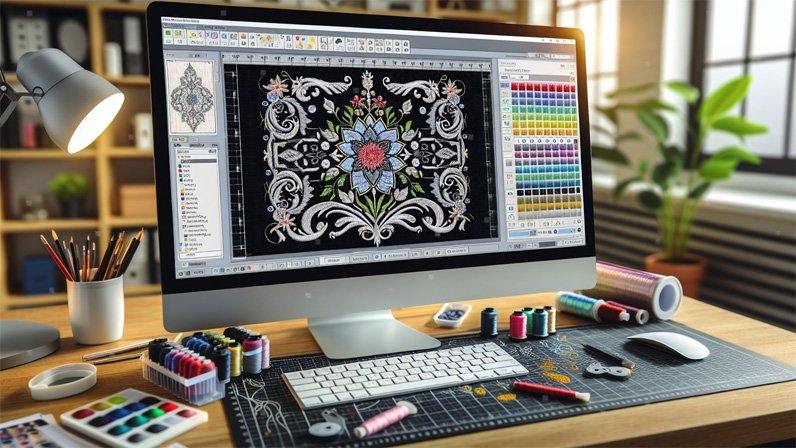What Is Digitizing Embroidery? The Art Behind Every Stitch
Introduction You see embroidered logos everywhere—on baseball caps, corporate polos, and branded jackets. They look clean, professional, and seamlessly stitched. It’s easy to assume you can just send a JPEG to an embroidery machine and get that result. But if you’ve ever tried that, you know the outcome is usually a tangled, puckered mess. The critical, behind-the-scenes process that makes the magic happen is called digitizing embroidery. This isn’t a simple file conversion; it’s a sophisticated craft that blends technical skill with artistic vision. It’s the essential translation service between a digital image and a physical embroidery machine, and it’s the single biggest factor between an amateur-looking stitchout and a flawless professional finish. Let’s pull back the curtain on this fascinating process and explore the art behind every single stitch. It’s Not Printing: Why Embroidery Needs a Different Language To understand digitizing, you first must understand why you can’t just “print” a design onto fabric with thread. A standard image file, like a JPEG or PNG, is a raster image. It’s made of a grid of tiny colored squares called pixels. Your computer screen displays these pixels to create a picture. An embroidery machine is not a printer. It’s a sophisticated mechanical device that needs a set of commands to physically move its needle and thread. It needs to know: A pixel-based image gives it none of this information. This is where the digitizer comes in. They act as a translator, interpreting the visual image and creating a brand new set of instructions—a digital blueprint—that the machine can execute. So, What Exactly Is Digitizing Embroidery? Digitizing embroidery is the process of manually converting artwork into a digital file containing specific commands that an embroidery machine can read to recreate the design in thread. Think of it like this: Without the architect’s blueprints, the construction crew wouldn’t know where to put the walls or the windows. Similarly, without a digitized file, an embroidery machine has no idea what to do. The Digitizer’s Toolkit: It’s More Than Software While digitizers use specialized software (like Wilcom or Hatch), the real tools are their knowledge and skill. For every element of a design, they make a series of critical decisions. 1. Stitch Type Selection The digitizer chooses the best type of stitch to represent each part of the design. The three main types are: 2. Mapping the Stitch Path The order in which the machine sews the design is crucial. The digitizer must sequence the elements logically to: 3. Underlay: The Secret Foundation This is the most important step that amateurs miss. Underlay is a series of stitches sewn first but hidden beneath the top stitches. It serves several vital functions: 4. Pull Compensation Thread naturally pulls on the fabric as it stitches, which can cause small gaps to appear between different sections. Digitizers use pull compensation to intentionally oversize elements slightly. When the thread pulls and contracts, the elements settle into their perfect position with no gaps. 5. Density Settings The digitizer must set how closely packed the stitches are. Too dense, and the design becomes stiff and can cause fabric puckering. Too sparse, and the fabric shows through, making the design look cheap and unfinished. The ideal density changes based on the type of fabric being used. The Difference Between Digitizing and Auto-Digitizing Many software programs have an “auto-digitize” button. This feature automatically traces an image and assigns stitches. While it seems like a quick fix, the results are almost always poor. Why Professional Digitizing is Non-Negotiable for Quality You can have the most expensive embroidery machine in the world, but if you feed it a poorly digitized file, it will produce a poor-quality product. The digitized file is the brain of the operation; the machine is just the muscle. Investing in professional digitizing services ensures: Conclusion: The Unseen Artistry in Every Stitch Digitizing embroidery is far more than a technical process; it is a true art form. It requires a deep understanding of how thread interacts with fabric, a keen eye for visual design, and the patience to plot thousands of tiny commands. The next time you see an embroidered cap or jacket, take a closer look. Appreciate the sharp edges of the text, the smooth coverage of the fills, and the overall clean appearance. What you’re seeing is not just thread; you’re seeing the invisible hand of a digitizer—the architect of embroidery who translated a idea into a blueprint and brought it to life, one perfect stitch at a time.

